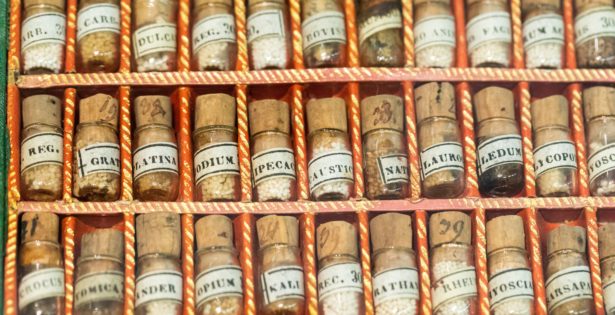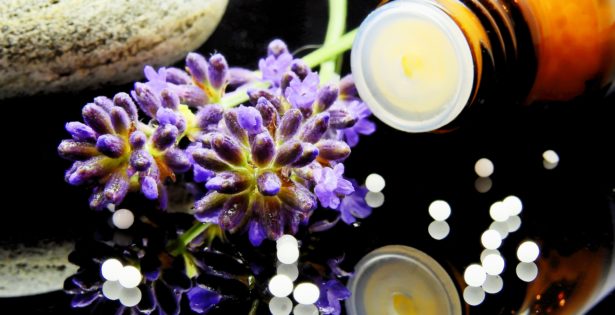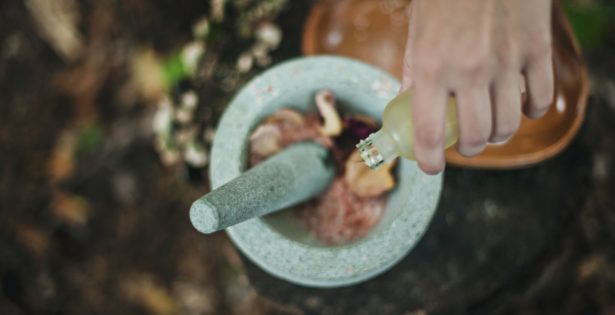WP_Query Object
(
[query] => Array
(
[category__in] => Array
(
[0] => 19
[1] => 39
[2] => 419
[3] => 66
)
[post__not_in] => Array
(
[0] => 7844
)
[posts_per_page] => 50
[ignore_sticky_posts] => 1
[orderby] => desc
[_shuffle_and_pick] => 3
)
[query_vars] => Array
(
[category__in] => Array
(
[0] => 19
[1] => 39
[2] => 419
[3] => 66
)
[post__not_in] => Array
(
[0] => 7844
)
[posts_per_page] => 50
[ignore_sticky_posts] => 1
[orderby] => desc
[_shuffle_and_pick] => 3
[error] =>
[m] =>
[p] => 0
[post_parent] =>
[subpost] =>
[subpost_id] =>
[attachment] =>
[attachment_id] => 0
[name] =>
[pagename] =>
[page_id] => 0
[second] =>
[minute] =>
[hour] =>
[day] => 0
[monthnum] => 0
[year] => 0
[w] => 0
[category_name] => peter-borten
[tag] =>
[cat] => 19
[tag_id] =>
[author] =>
[author_name] =>
[feed] =>
[tb] =>
[paged] => 0
[meta_key] =>
[meta_value] =>
[preview] =>
[s] =>
[sentence] =>
[title] =>
[fields] =>
[menu_order] =>
[embed] =>
[category__not_in] => Array
(
)
[category__and] => Array
(
)
[post__in] => Array
(
)
[post_name__in] => Array
(
)
[tag__in] => Array
(
)
[tag__not_in] => Array
(
)
[tag__and] => Array
(
)
[tag_slug__in] => Array
(
)
[tag_slug__and] => Array
(
)
[post_parent__in] => Array
(
)
[post_parent__not_in] => Array
(
)
[author__in] => Array
(
)
[author__not_in] => Array
(
)
[search_columns] => Array
(
)
[suppress_filters] =>
[cache_results] => 1
[update_post_term_cache] => 1
[update_menu_item_cache] =>
[lazy_load_term_meta] => 1
[update_post_meta_cache] => 1
[post_type] =>
[nopaging] =>
[comments_per_page] => 50
[no_found_rows] =>
[order] => DESC
)
[tax_query] => WP_Tax_Query Object
(
[queries] => Array
(
[0] => Array
(
[taxonomy] => category
[terms] => Array
(
[0] => 19
[1] => 39
[2] => 419
[3] => 66
)
[field] => term_id
[operator] => IN
[include_children] =>
)
)
[relation] => AND
[table_aliases:protected] => Array
(
[0] => wp_term_relationships
)
[queried_terms] => Array
(
[category] => Array
(
[terms] => Array
(
[0] => 19
[1] => 39
[2] => 419
[3] => 66
)
[field] => term_id
)
)
[primary_table] => wp_posts
[primary_id_column] => ID
)
[meta_query] => WP_Meta_Query Object
(
[queries] => Array
(
)
[relation] =>
[meta_table] =>
[meta_id_column] =>
[primary_table] =>
[primary_id_column] =>
[table_aliases:protected] => Array
(
)
[clauses:protected] => Array
(
)
[has_or_relation:protected] =>
)
[date_query] =>
[request] =>
SELECT SQL_CALC_FOUND_ROWS wp_posts.ID
FROM wp_posts LEFT JOIN wp_term_relationships ON (wp_posts.ID = wp_term_relationships.object_id)
WHERE 1=1 AND wp_posts.ID NOT IN (7844) AND (
wp_term_relationships.term_taxonomy_id IN (19,39,66,419)
) AND ((wp_posts.post_type = 'post' AND (wp_posts.post_status = 'publish' OR wp_posts.post_status = 'acf-disabled')))
AND ID NOT IN
(SELECT `post_id` FROM wp_postmeta
WHERE `meta_key` = '_pilotpress_level'
AND `meta_value` IN ('','employee')
AND `post_id` NOT IN
(SELECT `post_id` FROM wp_postmeta
WHERE `meta_key` = '_pilotpress_level'
AND `meta_value` IN ('' )))
GROUP BY wp_posts.ID
ORDER BY wp_posts.post_date DESC
LIMIT 0, 50
[posts] => Array
(
[0] => WP_Post Object
(
[ID] => 8320
[post_author] => 3
[post_date] => 2021-08-04 19:39:53
[post_date_gmt] => 2021-08-04 19:39:53
[post_content] =>
Countless medical studies have shown just how dramatically our beliefs influence our health. People who believe they’re getting a new drug or treatment can experience improvements in mood or profound relief from pain – even when they’re in the placebo group. Our beliefs can alter how toxins affect us. And on the “nocebo” side of the equation (a negative placebo effect) we can even generate signs and symptoms of diseases we don’t have.
In one Japanese study, subjects known to have a strong reaction to poison ivy were told that one of their arms was being rubbed with poison ivy. Yikes! But researchers actually touched them with the leaf of a harmless plant. Every participant broke out in a poison-ivy-like rash.
The subjects were told that their other arm would be rubbed with a harmless plant. Instead, the researchers rubbed real poison ivy on them! But only two out of thirteen people had a reaction to it.
We can make ourselves sick and we can make ourselves well. The key is the incredible power of belief. It’s been thoroughly and indisputably proven, yet few people consciously exploit this magic on a regular basis. I’d like to change that.
As a start, I suggest we practice observing positive belief every time we put something into our bodies.
When you eat, try getting yourself mentally and emotionally enrolled in a positive expectation about how you’ll be affected by it. Admire the food. Tell yourself it’s going to be deeply nourishing. Your body is going to efficiently extract the nutrients and deliver them to all your tissues. It’s totally reasonable to expect that it will support clear thinking, high energy and mental calm, glowing skin, efficient digestion, optimal organ function, strong immunity, etc.
For best results I recommend building your expectations for a minute at the beginning of the meal, remembering this from time to time during the meal, and then happily anticipating the benefits after the meal.
You might even try bringing your attention inward, visualizing the nutrients being absorbed through your intestines and flowing into all of your cells, and telling yourself, “I allow myself to receive the fullest, most complete health benefit from this food” – or whatever words feel natural to you.
What happens when you say to yourself or a dining partner, “I feel really good from this food. My body thrives on good food. I can already tell that this meal is exactly what I needed”?
This should be even easier to do with supplements, herbs, and drugs, since you’re consuming them with a specific healing purpose and outcome in mind. Don’t forget it. Tell yourself as you swallow them (or apply them, if topical) that they’re going to do what they’re intended to do, that they’re perfectly compatible with your body, that the benefits are already starting (whether you can feel it or not).
If you make a practice of priming yourself to expect good things you’re significantly more likely to experience good things, to notice the good things, and to be grateful for them.
Be well,
Peter
[post_title] => Expect Good Things: A Practice for Getting the Most Out of Food, Medicines, and Supplements
[post_excerpt] =>
[post_status] => publish
[comment_status] => open
[ping_status] => open
[post_password] =>
[post_name] => expect-good-things-a-practice-for-getting-the-most-out-of-food-medicines-and-supplements
[to_ping] =>
[pinged] =>
[post_modified] => 2021-08-04 19:39:53
[post_modified_gmt] => 2021-08-04 19:39:53
[post_content_filtered] =>
[post_parent] => 0
[guid] => https://thedragontree.com/?p=8320
[menu_order] => 0
[post_type] => post
[post_mime_type] =>
[comment_count] => 0
[filter] => raw
[webinar_id] => 0
)
[1] => WP_Post Object
(
[ID] => 7958
[post_author] => 3
[post_date] => 2020-08-01 19:30:37
[post_date_gmt] => 2020-08-01 19:30:37
[post_content] =>
I was wandering around in a hardware store the other day, feeling rather hot and stuffy in my mask – and also a little anxious – when I realized my mouth was wide open. I shut my mouth, which required me to deepen my breathing through my nose, and soon my mask felt less stuffy and the anxiety was gone. It occurred to me that I mouth-breathe a lot when I have a mask on, and I’ve resolved to stop.
A few years after moving to Colorado I realized that I had been mouth breathing while asleep and increasingly while awake, too. During the same period of time, I noticed my sleep had been worse, I felt more anxious, I had a harder time concentrating, my energy was lower, and my gums had receded significantly. It might sound like a stretch to attribute all of that to breathing through my mouth rather than my nose, but I’m convinced that mouth breathing was a contributing factor.
Mouth breathing begets more mouth breathing. When we breathe through our mouth over years, the facial structure can change – especially in children. The face may become longer and narrower. The palate narrows too, which causes a higher arch, infringing on the airways above. Teeth become crowded and crooked. The tongue drops to the floor of the mouth all day instead of resting against the upper palate, and this can contribute to sleep apnea and snoring.
Mouth breathing tends to be more rapid than nose breathing, which may promote a feeling of anxiousness and may be misdiagnosed as Attention Deficit Disorder. Breathing through the mouth is less efficient at oxygenating the body than nasal breathing. Mouth breathing can raise our blood pressure. It causes dryness of the mouth, bad breath, and increased susceptibility to tooth decay and gum disease.
When we breathe through the nose, we inhale more of a gas called nitric oxide (not “laughing gas” which is nitrous oxide) that is produced in the paranasal sinuses. Nitric oxide kills bacteria. The nose also warms and filters incoming air. For all these reasons, nasal breathing reduces our chances of getting sick via airborne germs. In terms of spreading sickness to others, we exhale many fewer “respiratory droplets” through the nose than through the mouth. Some doctors propose that nasal breathing is an easy intervention to reduce your risk of contracting COVID-19. If wearing a mask causes you to mouth breathing, this may partly or significantly negate the protective value of the mask. I recommend trying to remember to breathe through your nose especially in public spaces and when wearing a mask.
Nose breathing carries the nitric oxide from the nasal airways down into the lungs, where it decreases blood pressure and increases oxygenation of our tissues. When we mouth breathe we don’t get these benefits. Interestingly, studies have shown that humming increases nasal nitric oxide production, so your homework assignment is to hum throughout the day.
For most mouth breathers, switching to nasal breathing is mainly just a matter of remembering to do it. But there are three times when it can be more tricky: while sleeping, while congested, and while exercising.
If you keep your mouth closed while sleeping, chances are you’ll sleep better, snore less, wake up with sweeter breath, and without a sore throat. Some scientists have also proposed that mouth breathing during sleep increases the need to urinate during the night, so switching to your nose may reduce your trips to the bathroom.
I’ve found that blowing my nose before bed and simply intending to keep my mouth closed while asleep works fairly well. If that doesn’t work for you, consider taping your mouth closed. I know it sounds weird and perhaps unpleasant, but it’s not bad. Just use a small piece of medical tape (about an inch) vertically over the center of your lips. 3M paper tape is a good choice. If this makes you psychologically uncomfortable, try taping your mouth half an hour before going to sleep so you can get used to it. Or try taping just one side of your mouth. (Don’t tape your mouth if you’re drunk or have a health issue that may necessitate an urgent need to open your mouth or an obstruction of your nose. It’s also a good idea to leave at least a corner of your mouth not taped.) Having a bedroom that’s cool, airy, and clean will help.
It’s totally normal to breathe through your mouth while engaged in intense exercise. Just watch people jogging down the street and note how many have an open mouth. It takes practice and effort to break yourself of this habit, and it may feel at first like you simply can’t get enough air in through your nose. But you’ll find that your nasal breaths are longer and deeper. Your breathing rate will slow down considerably and so will your heart rate. Plus, you’ll get more oxygen into your body and at the end of your workout you’ll feel invigorated.
If you have a hard time breathing through your nose because you’re congested, there are a few options. Obviously if you’re sick you may just have to wait for it to pass, and if you have allergies you’ll have to do your best to avoid allergens and treat your allergy symptoms with whatever works (some natural options include quercetin, nettle extract, liposomal vitamin C, n-acetyl cysteine, and a supplement called Antronex made by the company Standard Process [I have no relationship with them]).
But simply breathing through your nose anyway can often encourage it to clear. At the beginning you may have to enlist your mouth to assist, but if you continue to breathe exclusively through your mouth your nose will be less apt to clear. Just try to breathe through your nose and notice its ability to clear itself.
Finally, there are some specific breathing techniques for unblocking your nose, one of which is simply to hold your breath for as long as you can while nodding your head up and down or swaying your torso from side to side, then releasing the breath through the nose. Within five breaths this usually works. Here’s a video of it. You may also benefit from nasal rinsing (AKA “neti”) followed by nasal lubrication. We make a Nasal Oil for this purpose which I formulated.
I would love to hear about your experience with mouth breathing and nose breathing. Share with us in the comments section.
Be well,
Dr. Peter Borten
[post_title] => The Magic is in Your Nose
[post_excerpt] =>
[post_status] => publish
[comment_status] => open
[ping_status] => open
[post_password] =>
[post_name] => the-magic-is-in-your-nose
[to_ping] =>
[pinged] =>
[post_modified] => 2020-08-01 19:35:03
[post_modified_gmt] => 2020-08-01 19:35:03
[post_content_filtered] =>
[post_parent] => 0
[guid] => http://thedragontree.com/?p=7958
[menu_order] => 0
[post_type] => post
[post_mime_type] =>
[comment_count] => 8
[filter] => raw
[webinar_id] => 0
)
[2] => WP_Post Object
(
[ID] => 8317
[post_author] => 3
[post_date] => 2021-07-28 22:49:45
[post_date_gmt] => 2021-07-28 22:49:45
[post_content] =>
Recently I wrote about the Fire Element, which governs the summer season, and how as a culture we tend to glorify fire qualities (such as passion, activity, consumption, and drive) while overlooking water qualities (like receptivity, humility, reflection, and stillness). I explained that the natural order is a balance between these two. In parallel with this cultural imbalance, much of the planet is heating up, exhausted of resources, and drying out. Inviting water – and, more broadly, yin – in equal measure to fire is essential for our evolution and survival.
To follow up on this theme I want to clarify that fire isn’t intrinsically pathological. It’s all about how we embody it. In fact, if we tap into our innate fire in a way that’s governed by clarity, balance, and love (rather than fear and short-term pleasure-seeking), it blesses us with its virtues.
Let’s look at some of these virtues. I invite you to imagine each of these qualities in the form of physical fire and then feel into how you embody it as a human virtue.
Expansiveness: Fire’s nature is to expand. Not only does it expand in size as it finds more fuel to consume, but also its light expands into the darkness and its warmth expands into the cold. As the element that rules our heart, it prompts us to expand through acceptance, joy, and love.
Warmth: Warmth is more than a physical property, it’s an expression of our inner fire that engenders comfort, good humor, and connection. Warmth almost always goes along with openness. The ability to kindle genuine warmth in a difficult situation is a gift.
Lightness: With fire, lightness means two things – the quality of being luminous and the quality of being weightless. And it’s so natural that the word has been paired with the heart – lighthearted. (You don’t hear anyone being called light-stomached, do you?) The fact that this virtue can be evoked at any time, no matter how hard life gets, is something we should all remember.
Inclusivity: As the epitome of fire in our world – the Sun – denies its warmth and light to no one, another of fire’s virtues is inclusivity. Open hearts are inclusive hearts. There’s no part of our shadow that fire isn’t willing to illuminate.
Joy: Joy is more than an emotion. It’s an embodiment of truth – that what we are is essentially joyful, and that the Divine Play of life is an act of joyous exploration. The ego can easily shroud this truth; thus, living in joy is a purposeful act of service to ourselves and the world. When we choose joy we are remembering.
Unification: All manner of fuel can be fed into a fire and it’s rendered into one indivisible ash. Likewise, all of the above virtues support fire’s virtue of unification. Expansiveness reminds us that we’re one with everything. Warmth is the magic ingredient in cooking and interpersonal connection that brings different flavors together. Lightness shows us the insignificance of our differences and the undeniability of our kinship. Inclusivity is the invitation to discover our alchemy together and to integrate the fragmented parts of ourselves. And joy is the conductor of this grand reunion.
This week let’s all choose one of these virtues to cultivate. Sit with a fire and seek to understand what this virtue has to do with fire. Invite the fire in front of you to activate the fire inside you. Ask to be an effective channel for this virtue, and intend to embody it with an attitude of play and service. Then share with us in the comments section about how it went.
Love,
Peter
[post_title] => Six Virtues of Fire That Will Change Your Life for the Better
[post_excerpt] =>
[post_status] => publish
[comment_status] => open
[ping_status] => open
[post_password] =>
[post_name] => six-virtues-of-fire-that-will-change-your-life-for-the-better
[to_ping] =>
[pinged] =>
[post_modified] => 2021-07-28 22:49:45
[post_modified_gmt] => 2021-07-28 22:49:45
[post_content_filtered] =>
[post_parent] => 0
[guid] => https://thedragontree.com/?p=8317
[menu_order] => 0
[post_type] => post
[post_mime_type] =>
[comment_count] => 2
[filter] => raw
[webinar_id] => 0
)
)
[post_count] => 3
[current_post] => -1
[before_loop] => 1
[in_the_loop] =>
[post] => WP_Post Object
(
[ID] => 8320
[post_author] => 3
[post_date] => 2021-08-04 19:39:53
[post_date_gmt] => 2021-08-04 19:39:53
[post_content] =>
Countless medical studies have shown just how dramatically our beliefs influence our health. People who believe they’re getting a new drug or treatment can experience improvements in mood or profound relief from pain – even when they’re in the placebo group. Our beliefs can alter how toxins affect us. And on the “nocebo” side of the equation (a negative placebo effect) we can even generate signs and symptoms of diseases we don’t have.
In one Japanese study, subjects known to have a strong reaction to poison ivy were told that one of their arms was being rubbed with poison ivy. Yikes! But researchers actually touched them with the leaf of a harmless plant. Every participant broke out in a poison-ivy-like rash.
The subjects were told that their other arm would be rubbed with a harmless plant. Instead, the researchers rubbed real poison ivy on them! But only two out of thirteen people had a reaction to it.
We can make ourselves sick and we can make ourselves well. The key is the incredible power of belief. It’s been thoroughly and indisputably proven, yet few people consciously exploit this magic on a regular basis. I’d like to change that.
As a start, I suggest we practice observing positive belief every time we put something into our bodies.
When you eat, try getting yourself mentally and emotionally enrolled in a positive expectation about how you’ll be affected by it. Admire the food. Tell yourself it’s going to be deeply nourishing. Your body is going to efficiently extract the nutrients and deliver them to all your tissues. It’s totally reasonable to expect that it will support clear thinking, high energy and mental calm, glowing skin, efficient digestion, optimal organ function, strong immunity, etc.
For best results I recommend building your expectations for a minute at the beginning of the meal, remembering this from time to time during the meal, and then happily anticipating the benefits after the meal.
You might even try bringing your attention inward, visualizing the nutrients being absorbed through your intestines and flowing into all of your cells, and telling yourself, “I allow myself to receive the fullest, most complete health benefit from this food” – or whatever words feel natural to you.
What happens when you say to yourself or a dining partner, “I feel really good from this food. My body thrives on good food. I can already tell that this meal is exactly what I needed”?
This should be even easier to do with supplements, herbs, and drugs, since you’re consuming them with a specific healing purpose and outcome in mind. Don’t forget it. Tell yourself as you swallow them (or apply them, if topical) that they’re going to do what they’re intended to do, that they’re perfectly compatible with your body, that the benefits are already starting (whether you can feel it or not).
If you make a practice of priming yourself to expect good things you’re significantly more likely to experience good things, to notice the good things, and to be grateful for them.
Be well,
Peter
[post_title] => Expect Good Things: A Practice for Getting the Most Out of Food, Medicines, and Supplements
[post_excerpt] =>
[post_status] => publish
[comment_status] => open
[ping_status] => open
[post_password] =>
[post_name] => expect-good-things-a-practice-for-getting-the-most-out-of-food-medicines-and-supplements
[to_ping] =>
[pinged] =>
[post_modified] => 2021-08-04 19:39:53
[post_modified_gmt] => 2021-08-04 19:39:53
[post_content_filtered] =>
[post_parent] => 0
[guid] => https://thedragontree.com/?p=8320
[menu_order] => 0
[post_type] => post
[post_mime_type] =>
[comment_count] => 0
[filter] => raw
[webinar_id] => 0
)
[comment_count] => 0
[current_comment] => -1
[found_posts] => 253
[max_num_pages] => 6
[max_num_comment_pages] => 0
[is_single] =>
[is_preview] =>
[is_page] =>
[is_archive] => 1
[is_date] =>
[is_year] =>
[is_month] =>
[is_day] =>
[is_time] =>
[is_author] =>
[is_category] => 1
[is_tag] =>
[is_tax] =>
[is_search] =>
[is_feed] =>
[is_comment_feed] =>
[is_trackback] =>
[is_home] =>
[is_privacy_policy] =>
[is_404] =>
[is_embed] =>
[is_paged] =>
[is_admin] =>
[is_attachment] =>
[is_singular] =>
[is_robots] =>
[is_favicon] =>
[is_posts_page] =>
[is_post_type_archive] =>
[query_vars_hash:WP_Query:private] => bd0620883b07e3b416e1a04ca6fd731a
[query_vars_changed:WP_Query:private] =>
[thumbnails_cached] =>
[allow_query_attachment_by_filename:protected] =>
[stopwords:WP_Query:private] =>
[compat_fields:WP_Query:private] => Array
(
[0] => query_vars_hash
[1] => query_vars_changed
)
[compat_methods:WP_Query:private] => Array
(
[0] => init_query_flags
[1] => parse_tax_query
)
)



 Cart
Cart





